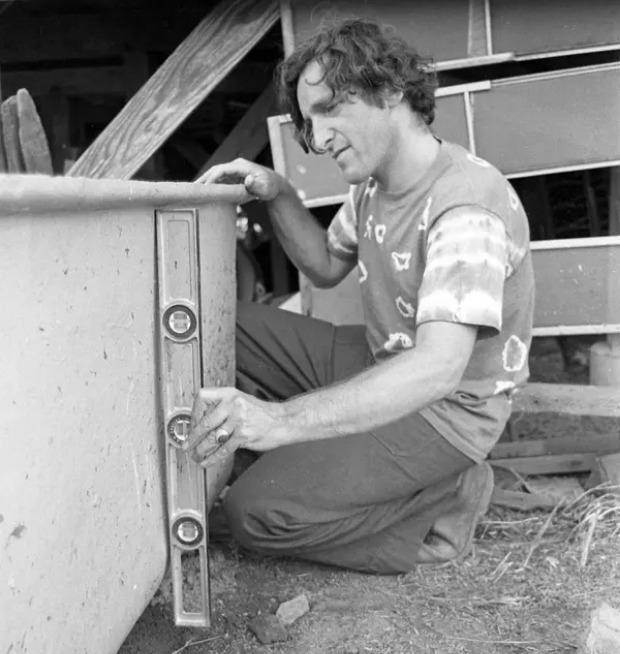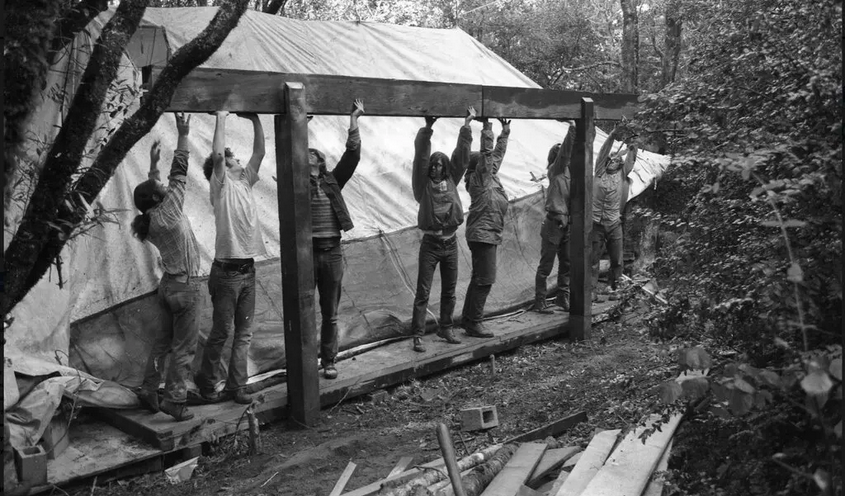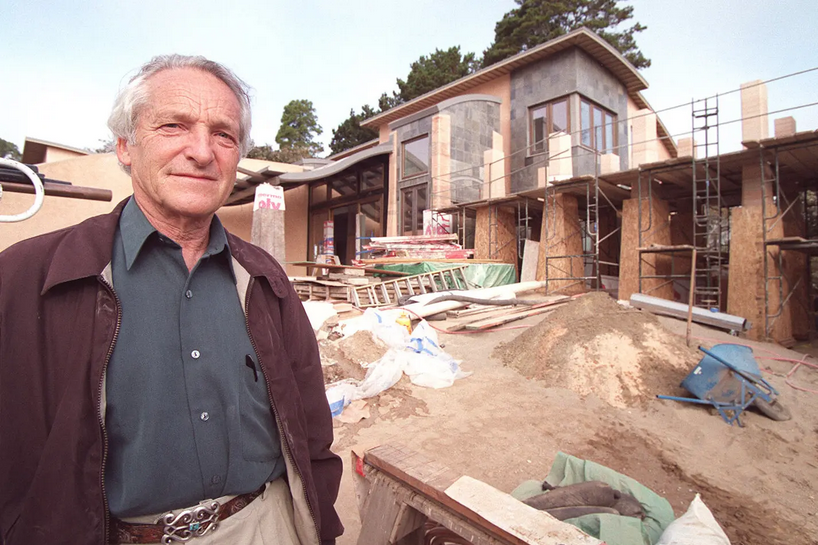Sim Van der Ryn, a Dutch-born architect sometimes called “the father of green architecture,” died. He was 89. Mr. Van der Ryn taught architecture at the University of California, Berkeley, from 1961 to 1995, a span interrupted by a four-year stint in the 1970s as Gov. Jerry Brown’s state architect.
 Early on Sim was swept up in the counter cultural ethos that consumed the Berkeley campus in the 1960s and the beginning of the ’70s, inspiring him to look beyond traditional architecture to find new ways of working.
Early on Sim was swept up in the counter cultural ethos that consumed the Berkeley campus in the 1960s and the beginning of the ’70s, inspiring him to look beyond traditional architecture to find new ways of working.
In 1971, he put his theories into practice when he abandoned the bustle of Berkeley for a five-acre plot that he owned north of San Francisco, bringing along more than a dozen students for an academic quarter of field study. The students lived on site four days a week, where they built communal structures and living quarters entirely from salvaged materials.
 This form of “outlaw building” emphasized hands-on experience and a blithe disregard for government codes and permits. The point was to liberate architects so they could reimagine what a dwelling or office building should be — in practical, earth-friendly terms.
This form of “outlaw building” emphasized hands-on experience and a blithe disregard for government codes and permits. The point was to liberate architects so they could reimagine what a dwelling or office building should be — in practical, earth-friendly terms.
Those fringe theories began to go mainstream in 1975, when Governor Brown, known for his outside-the-box thinking and environmental advocacy, hired Mr. Van der Ryn. “Sacramento is just a sandbox for us to play in,” Mr. Van der Ryn recalled the governor telling him. “You can go for what you want. I’m with you.” At home in that sandbox, Mr. Van der Ryn pioneered the use of sustainable materials, solar energy and natural ventilation in government buildings. “We became, and still are, the most energy-efficient state in the country,” Mr. Van der Ryn said. “We reduced energy consumption by 40 percent from what was then the standard.”
 His earth-first approach was all the more notable given that he came of age in the profession at the height of the architectural movement known as the International style, epitomized by glassy minimalism. “Most people think buildings are sculptural objects or works of art,” Mr. Van der Ryn said. “But my view has always been that buildings are organisms and ecosystems, and humans make up an important part of those systems. Architecture critics never review buildings in terms of humans.”
His earth-first approach was all the more notable given that he came of age in the profession at the height of the architectural movement known as the International style, epitomized by glassy minimalism. “Most people think buildings are sculptural objects or works of art,” Mr. Van der Ryn said. “But my view has always been that buildings are organisms and ecosystems, and humans make up an important part of those systems. Architecture critics never review buildings in terms of humans.”
Sim’s family were Jewish, and with war looming in Europe, they fled to the United States in1939, the day Nazi forces invaded Poland.
 In the 1960s, Mr. Van der Ryn traveled around California and New Mexico, studying the hippie communes that were popping up and finding inspiration in their practical strategies for living off the land.
In the 1960s, Mr. Van der Ryn traveled around California and New Mexico, studying the hippie communes that were popping up and finding inspiration in their practical strategies for living off the land.
He also helped found the Farallones Institute, a nonprofit organization devoted to renewable technologies. The group transformed a Victorian home in Berkeley into a laboratory for self-sufficient living equipped with a solar water heater and solar oven, a composting toilet and a gray-water recycling system, as well as a chicken coop, a vegetable garden and beehives.
 Among Mr. Van der Ryn’s many projects was a showroom for Real Goods, a company selling renewable energy systems. Built on a former dump site, it had a number of green amenities, including waterless toilets, solar panels and a fully passive heating and cooling system. The showroom used 90 percent less energy than a standard retail building of its size.
Among Mr. Van der Ryn’s many projects was a showroom for Real Goods, a company selling renewable energy systems. Built on a former dump site, it had a number of green amenities, including waterless toilets, solar panels and a fully passive heating and cooling system. The showroom used 90 percent less energy than a standard retail building of its size.
“The problem with architectural ideology was that it was ideology,” he said. “But I want to know how architecture really relates to human beings, and I don’t see any answers in the ideology.”
You can read the original article at www.nytimes.com

RIP Sim. Fascinating. Thank you for making me aware of his work.